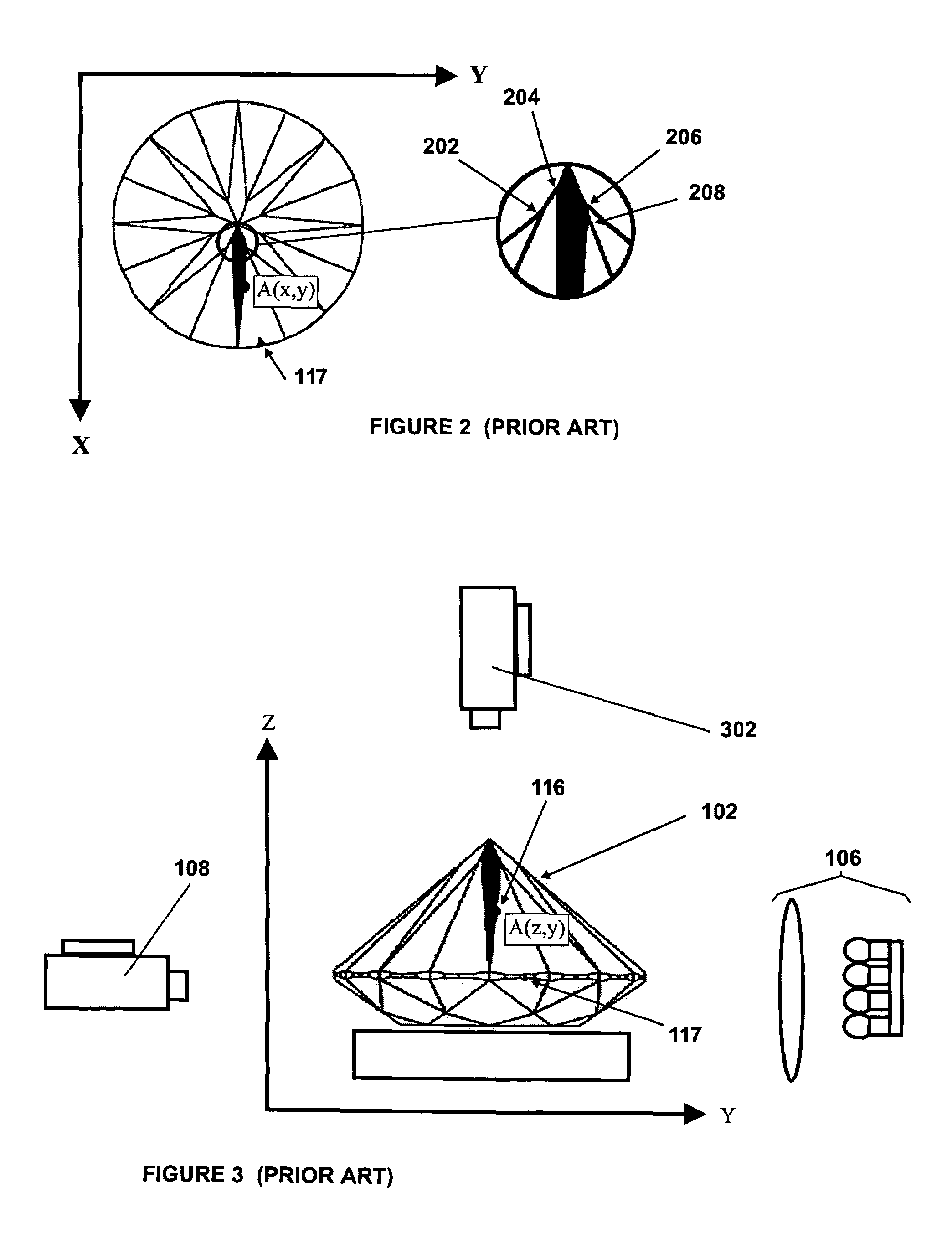Method and apparatus for examining a diamond
a diamond and diamond technology, applied in the field of diamond methods and apparatus, can solve the problems of inability to assess other quality measures, labour-intensive task of assessing these properties, and inability to perform inspections
- Summary
- Abstract
- Description
- Claims
- Application Information
AI Technical Summary
Benefits of technology
Problems solved by technology
Method used
Image
Examples
Embodiment Construction
[0057]FIG. 4 shows schematically a top view of an apparatus for locating a facet 408 of a diamond 402. In the arrangement shown, the diamond 402 is placed on a turntable (not visible in the figure) resting upon its table such that the pavilion of the diamond is facing upwards. The facet 408 identified in FIG. 4 is consequently a pavilion facet.
[0058]A light source 404 is provided in the preferred arrangement to illuminate the diamond. In the preferred embodiment, the light source 404 includes an array of light emitters arranged such that each individual emitter may be activated and deactivated independently of the others. For example, the emitters 404 may be light emitting diodes that can be controlled by a computer (not shown). Although eight light emitters are shown in FIG. 4, envisaged as being located above the diamond and emitting light generally downwards, this is for illustrative purposes only. It will be appreciated that the light sources 404 are shown schematically, and tha...
PUM
 Login to View More
Login to View More Abstract
Description
Claims
Application Information
 Login to View More
Login to View More - R&D
- Intellectual Property
- Life Sciences
- Materials
- Tech Scout
- Unparalleled Data Quality
- Higher Quality Content
- 60% Fewer Hallucinations
Browse by: Latest US Patents, China's latest patents, Technical Efficacy Thesaurus, Application Domain, Technology Topic, Popular Technical Reports.
© 2025 PatSnap. All rights reserved.Legal|Privacy policy|Modern Slavery Act Transparency Statement|Sitemap|About US| Contact US: help@patsnap.com



